Results
-
 £107.95
£107.95MIDNIGHT IN BUENOS AIRES (Prestige Concert Band Set) - Gorb, Adam
Score and Parts. Since a child, the composer has been fascinated by Latin American rhythms - especially the tango, a dance with strong roots in Argentina. This work attempts to capture much of the darkness, violence, mystery and seductive passion that this dance inspires. (Grade 5) Performance time c. 11 minutes. Recorded on Polyphonic QPRM152D MOSAIC: Great British Music Vol. 13
Estimated dispatch 7-14 working days
-
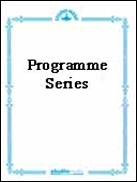 £87.95
£87.95SNOWMAN, The (Themes from) (Programme Concert Band) - Blake, Howard - Barnwell, Stephen
This needs no introduction! Themes from The Snowman includes: Walking in the Air, Music Box Dance, Motor Bike Galop and Dance of the Snowmen. Picc, 2fl, Ob, Bsn, 4 clar, A clar, B clar, 2 A/Sax, T Sax, Bari Sax, 2Cnts, 2Trpts, 4Hns, 2Trb,B/Trb, Euph, Tba, S/Bass, 3Perc
Estimated dispatch 7-14 working days
-
 £76.99
£76.99Viva La Musica - Hermann Pallhuber
Viva La Music--A joyous Hymn and Dance--is a cheerful piece of some 3:20 in length. It is comprised of two parts: a festive hymn with a recurring theme and a dance in the style of a lively jig. Thanks to its melodic character, its positive mood and its punchy wit Viva La Musica can equally serve as a short opening piece or as a finale. This work can even be played by a very small ensemble and, due to its lyricism and simple structure, it is especially suitable for youth wind band.The composer has dedicated Viva La Musica to the town of Fritzens in Tirol (Austria) and to its music guild.
Estimated dispatch 7-14 working days
-
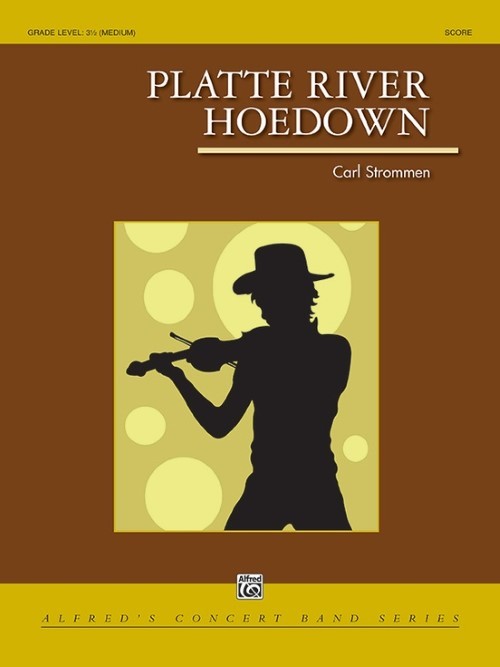 £77.50
£77.50Platte River Hoedown (Concert Band - Score and Parts) - Strommen, Carl
A hoedown is a Western American dance form closely associated with a jig, reel, or clog dance, performed traditionally as fiddle tunes in the bright, energetic, and upbeat style often found in the pulse of bluegrass music. This delightful piece provides a tuneful and rhythmic representation of this music for concert band.Duration: 3:00
Estimated dispatch 7-14 working days
-
 £72.00
£72.00Blue and Orange (Flute Solo with Concert Band - Score and Parts) - Wiffin, Rob
A song and dance for flute with wind band accompaniment. Blue is a gentle, tuneful solo. The accompaniment is very much in a chamber-music style and there are very few places where the whole ensemble plays at the same time. There is nothing overt or dramatic in the music and subtlety and rubato are very much the required manner. It is not a desperately sad piece but is just tinged with a little melancholy. Orange on the other hand is a fiery, driving dance which gives the soloist a chance to display technical prowess. During the outer sections Latin percussion carries the music along but the inner sections are more dissonant and are built on inner rhythm. The two pieces are as contrasting as possible, just like the colours of the title.Duration: 3.15 & 4.15
Estimated dispatch 7-14 working days
-
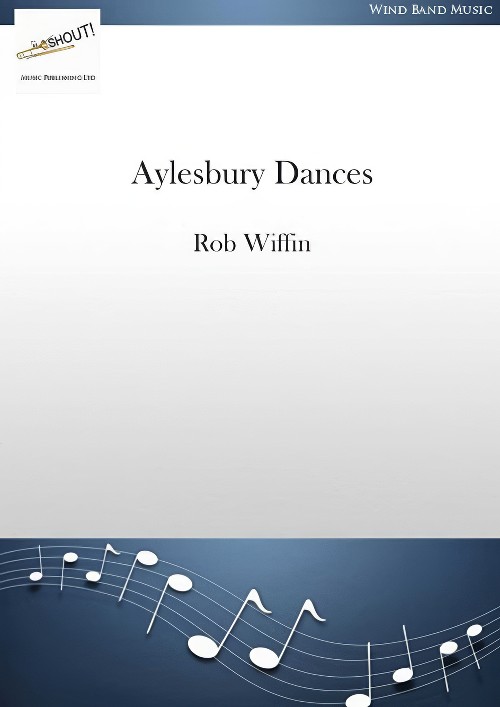 £69.95
£69.95Aylesbury Dances (Concert Band - Score and Parts) - Wiffin, Rob
The suite Aylesbury Dances was commissioned by the Aylesbury Concert Band to mark the occasion of their 25th Anniversary in 2019. Its three movements depict different aspects of Aylesbury: I. Pavane: The Town - Having read something of the town's history and its architecture I decided I wanted to write something ceremonial with the feel of music from Tudor times. Aylesbury was given its charter and borough status in 1554 by Mary Tudor so I took that as my starting point but then added some harmony that moves forward in time. This fits with the town's motto: Semper Prorsum (Always forward) and also with the Band's evolution from Aylesbury Town Band to Aylesbury Community Concert Band to Aylesbury Concert Band. The music can be defined as a pavane, or a cortege. The sense of procession is slightly disturbed by a 'Blue Leanie' moment. The Blue Leanie is an iconic Aylesbury building, an oblique rhombic prism which stands at an angle of 17% inclination. I took a quaver out of the time signature (I know the maths don't work!) to reflect this and added some bluer harmony at that point. This opening movement gives a sense of the grandeur and heritage of Aylesbury town and a chance for my friends from the brass section to warm up! II. Siciliana: Waterside - To balance the outer two movements, the middle movement of the suite has a slow lilting 6/8 rhythm. It is in the style of a Siciliana, a dance form originating in the baroque era. It is a graceful, tender and melancholic dance, cast here in a minor key and featuring the dark voice of the cor anglais. The Siciliana was often linked with pastoral scenes and Aylesbury itself sits amid some beautiful countryside. It may, therefore, seem a bit of a stretch to call this movement 'Waterside', especially as Aylesbury is so far from the sea, but the town has a theatre of that name and that was the genesis for this particular music. There is a statue of Ronnie Barker in the grounds of the Waterside theatre as he started his career in repertory theatre in Aylesbury, so I included a fleeting reference to the theme music of the comedy programme 'Open all Hours'. III. Frolic: Ducks in a Row - It was impossible to write a piece connected with Aylesbury without considering the famous Aylesbury ducks. Duck rearing was a major industry in the town in the 19th century. The white Aylesbury Duck is a symbol of the town, appearing on its coat of arms and in the logo of the Aylesbury Concert Band! This movement is all about trying to get the little darlings in a row so they can sing their 'Duck Chorus' together but they keep on scattering, flying off or swimming away as quickly as they can manage. It's a bit like watching ducks disperse when my dog jumps into the stream after them. Eventually we get more of them in a row - even though they protest. Hidden amongst the ducks is a reference to Erica Miller, saxophonist and chairman of the band, and there's even a veiled reference to a shark in the hope of getting them out of the water. Ducks in a Row is a fun romp bringing this suite of Aylesbury Dances to a suitably celebratory conclusion.- Rob Wiffin.Duration: 9.15
Estimated dispatch 7-14 working days
-
 £149.99
£149.99Aladdin Suite - Carl Nielsen
The large creative output of the Danish composer Carl Nielsen (1865 - 1931) contains six symphonies, chamber music, vocal works and music for the theatre: two operas (Saul & David and Maskerade) and stage music for sixteen different plays. The stage music for Aladdin was written at the request of Johannes Nielsen, the director of the Royal Theatre in Copenhagen. This production was based on the drama Aladdin (1805) by the Danish author Adam Oehlenschlger. Already before the premiere at the Royal Theatre, Carl Nielsen had adapted some of the music for the concert hall: he conducted the first performance of six of the seven movements of the concert suite on February6th, 1919. Johan de Meij's transcription for symphonic band contains the following movements: I Oriental Festival March II Aladdin's Dream / Dance of the Morning Mist III African Negro Dance
Estimated dispatch 7-14 working days
-
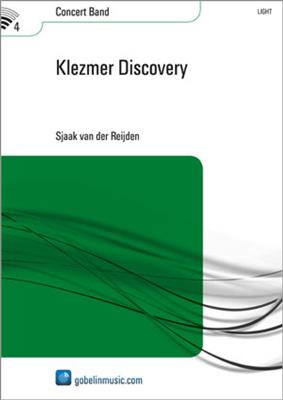 £174.99
£174.99Klezmer Discovery - Sjaak van der Reijden
The Yiddish word 'Klezmer' has been derived from the Old Hebrew words 'Kley' (tool, instrument) and 'Zemer' (song, singing, making music).Klezmer is the traditional music of Jews from Eastern Europe.Yiddish musicians (Klezmorim) were regularly invited to come and play at Yiddish weddings as well as several other Jewish celebrations and festive occasions. Despite its close connection with traditional Eastern European folk music, Klezmer music has succeeded in preserving its distinctive Jewish character. 'Klezmer Discovery' is a voyage of discovery through the richly varied music of the Jewish people from Eastern Europe.The introduction consists of anumber of motives from different traditional melodies (a Mitzve Tenzel and L'cha Dodi), followed by a melody in 3/8th time (Kandel's Hora). This dance melody originally came from Bessarabia (present-day Moldavia) and was taken along to America by Jewish musicians round 1900. Subsequently, 'Der Terk in Amerika', a composition by famous clarinet player Naftule Brandwein can be heard. A number of fast, cheerful dance melodies (bulgars) form the finale of 'Klezmer Discovery' (Lebedyk un Freylekh, Lomir sich iberbetn and Sherele).
Estimated dispatch 7-14 working days
-
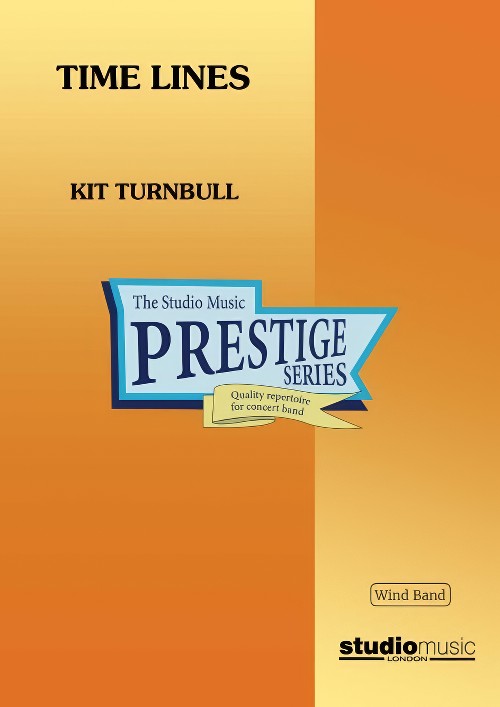 £32.95
£32.95Time Lines (Concert Band - Score only) - Turnbull, Kit
The time line is a western musicological device that allows us to define many of the rhythms used in sub-Saharan music. It is essentially a 12-beat pattern that can be subdivided as 6x2, 2x6, 4x3, or 3x4, which generates many of the polyrhythms that are common in African music. Time Lines is a single continuous work made up of four contrasting sections which are based on various aspects of African dance and choral music. The slow introduction introduces many of the rhythms that the piece is based on and is followed by a fast section which quotes a South African hymn. Abasundu Nabamhlope (the first line of which translates as 'Black and whites, let them give thanks together'. The chorale section which follows makes use of phrases from the hymn Nkosi Sikelel' iAfrika (Lord Bless Africa) which was written in 1897 and has since been adopted as the national anthem of several countries in southern Africa. The final allegro section sees the drawing together of the various dance and choral elements used in the piece with the percussion section playing rhythmic patterns generated by the time line.Duration: 13:30Recorded on QPRM151D TIME LINES: Great British Music for Wind Band Vol.12 (Royal Northern College of Music)
Estimated dispatch 7-14 working days
-
 £164.95
£164.95Time Lines (Concert Band - Score and Parts) - Turnbull, Kit
The time line is a western musicological device that allows us to define many of the rhythms used in sub-Saharan music. It is essentially a 12-beat pattern that can be subdivided as 6x2, 2x6, 4x3, or 3x4, which generates many of the polyrhythms that are common in African music. Time Lines is a single continuous work made up of four contrasting sections which are based on various aspects of African dance and choral music. The slow introduction introduces many of the rhythms that the piece is based on and is followed by a fast section which quotes a South African hymn. Abasundu Nabamhlope (the first line of which translates as 'Black and whites, let them give thanks together'. The chorale section which follows makes use of phrases from the hymn Nkosi Sikelel' iAfrika (Lord Bless Africa) which was written in 1897 and has since been adopted as the national anthem of several countries in southern Africa. The final allegro section sees the drawing together of the various dance and choral elements used in the piece with the percussion section playing rhythmic patterns generated by the time line.Duration: 13:30Recorded on QPRM151D TIME LINES: Great British Music for Wind Band Vol.12 (Royal Northern College of Music)
Estimated dispatch 7-14 working days
